By Nicole Nixon
Capital Public Radio
April 6, 2023
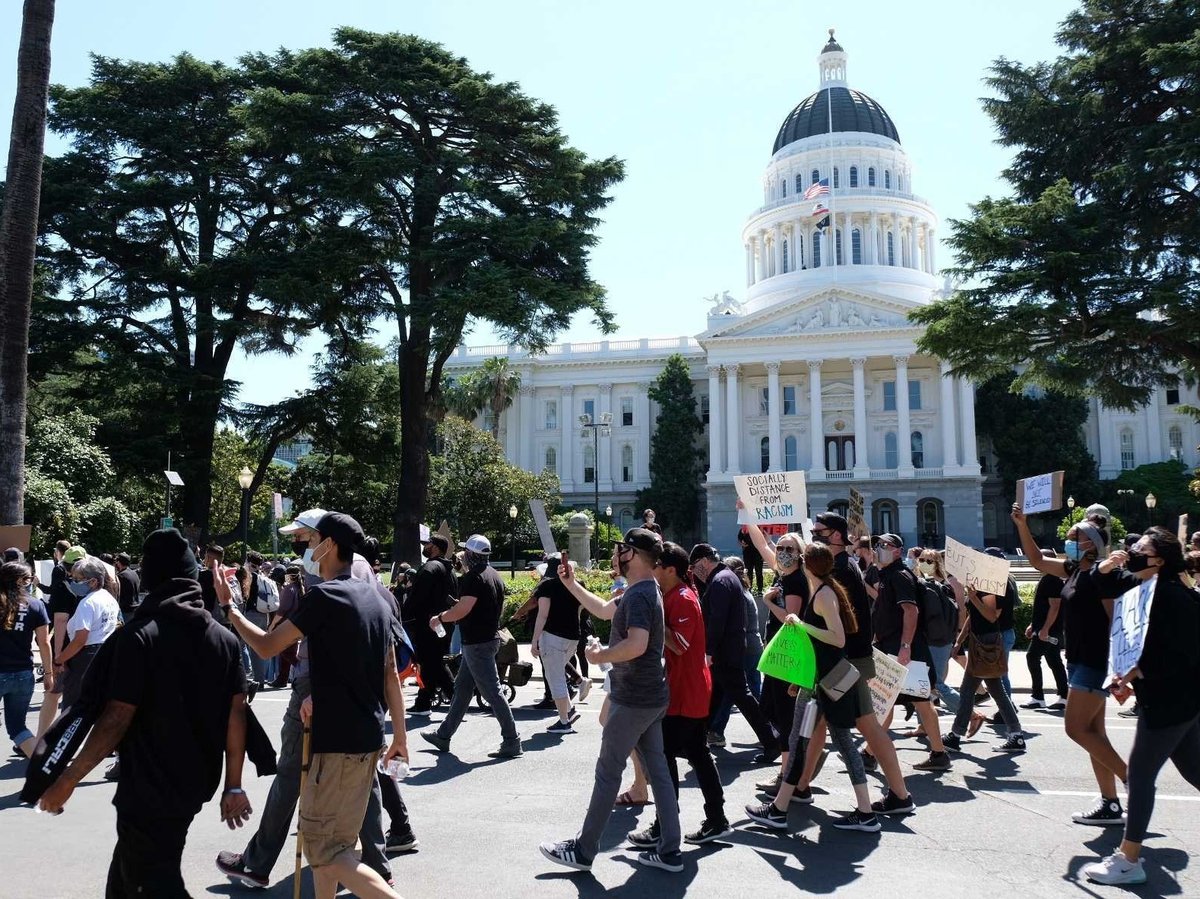
Andrew Nixon / CapRadio
For more than a century, the state Capitol’s west steps have been one of the definitive Sacramento and California gathering places.
The historic granite steps, which lead to the Capitol’s original entrance and overlook the downtown Mall, have hosted everything from decades of pro- and anti-war demonstrations and the Women’s March to gubernatorial inaugurations and an international marathon finish line. There’s even an annual wine festival on the Capitol’s west side.
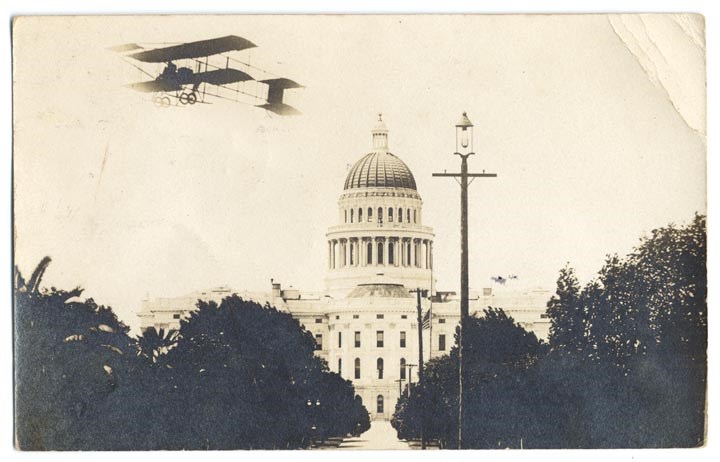
California State Library
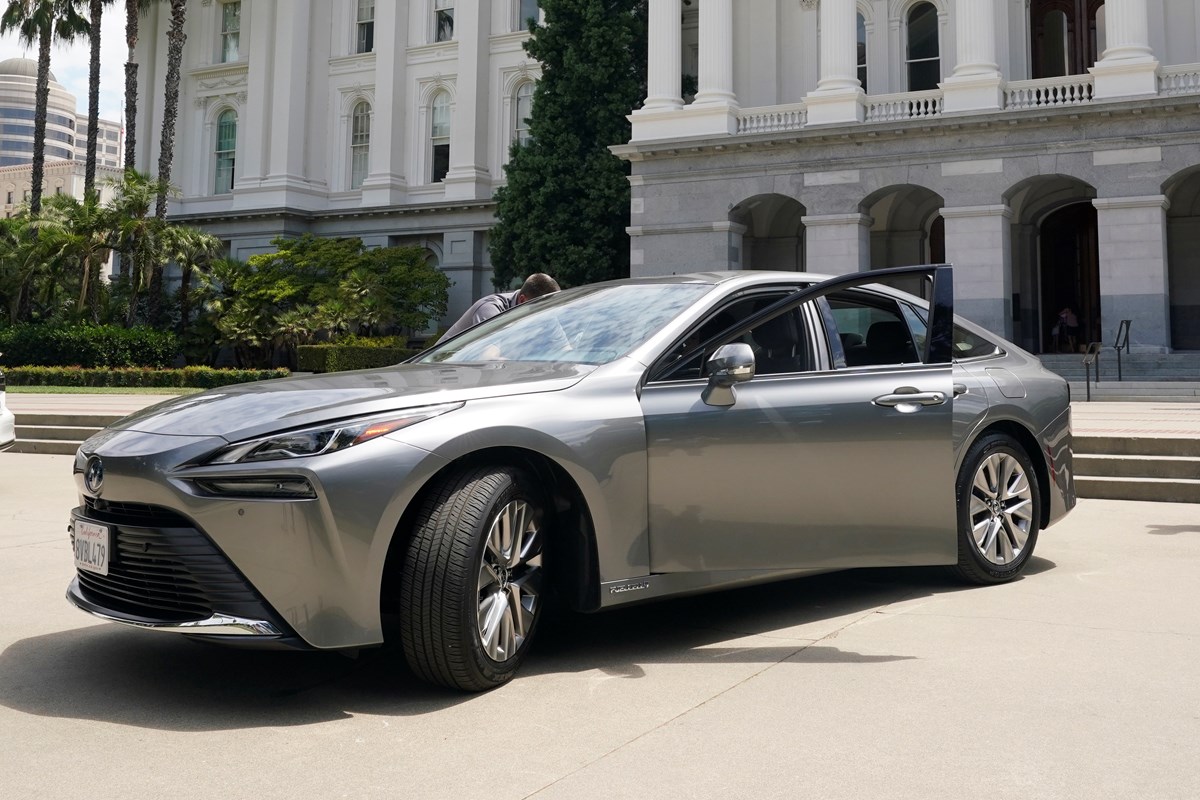
AP Photo/Rich Pedroncelli
But critics say plans to build an underground visitor’s center on the west side of the Capitol — part of a larger revamp of the grounds expected to cost more than $1 billion — could displace large gatherings for years, or permanently, and forever alter the west steps’ ability to host thousands of people.
A lawsuit delayed the Capitol remodel project, but the building and area mostly remain a construction zone, and excavation for the new visitor’s center could begin later this summer. It would close public access to much of the west side of the Capitol for up to three years, according to the event permitting office.
It’s unclear where many of the larger gatherings, protests and annual events held on the Capitol’s west face will relocate to during the construction.
State lawmakers in charge of the project have declined to answer questions about the future of the west steps and the larger facelift. Officially known as the Capitol Annex Project, it tear down outdated lawmaker offices and replace it with a modern facility, a new parking garage and new visitor’s center.
David Loy, legal director with the First Amendment Coalition, said the state should “make absolutely certain that there is abundant space” for people to gather at the Capitol during construction.
“I mean, this is the seat of state government,” Loy said. “There is nowhere else more important to have a space for exercising First Amendment rights.”
Why build a new visitor’s center at the state Capitol?
An underground visitor’s center was the dream of Ken Cooley, the former state lawmaker who oversaw the Capitol’s facelift until he lost re-election in 2022.
The new center would separate tourists from the lawmakers, staff and general business traffic that can overwhelm the Capitol. It would also provide more educational opportunities for visitors than the limited space currently allows.
But the project has long faced opposition, particularly from environmental groups concerned about trees in Capitol Park.
A Sacramento appeal court ruled in January that the state did not get adequate public feedback on the plans for the visitor’s center. The state is required to re-circulate those plans, though lawmakers and the Department of General Services have not said when that will happen.
In the most recent plans, the visitor’s center is inspired by that of the U.S. Capitol, which directs tourists to a subterranean museum before entering the main Capitol.
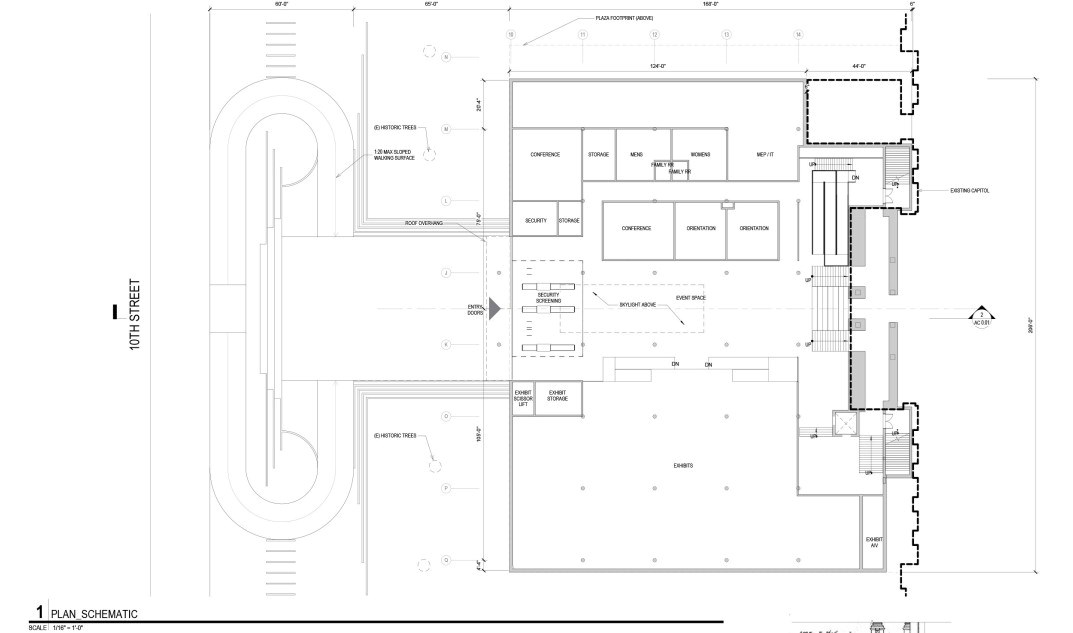
Mark Cavagnero Associates Architects
Sloped ramps would guide visitors and school groups below ground level to the visitor’s center entrance near 10th Street. People who work or have business in the building would continue through existing entrances on the north and south sides.
The visitor’s center would feature classrooms and new educational elements that explore the work of state government and the Capitol building’s many symbols. It would also have a skylight — which would be at ground level — to provide views of the building’s historic west side from the museum.
While people could still traverse the ground near the west portico of the Capitol, the skylight and safety railings would interrupt some of that space. The visitor’s center entrance and curved ramps also would make it impossible to walk in a straight line from the west entrance of the Capitol to 10th Street.
“There’ll be plenty of opportunity to rally here,” Cooley insisted during a recent interview on the Capitol’s west side. “That will not be a problem.”
He added, however, that the annual placement and lighting of the large state Christmas tree near the west steps “might be an issue.”
Cooley says that, once the annex project is complete and new pedestrian paths are open, many gatherings might move to the east side of the Capitol, which he argues may serve as a better place to hold demonstrations and large events.
“The park itself will be returned to a wide open space on every side of the Capitol, which hasn’t been the case in 70 years,” he said.
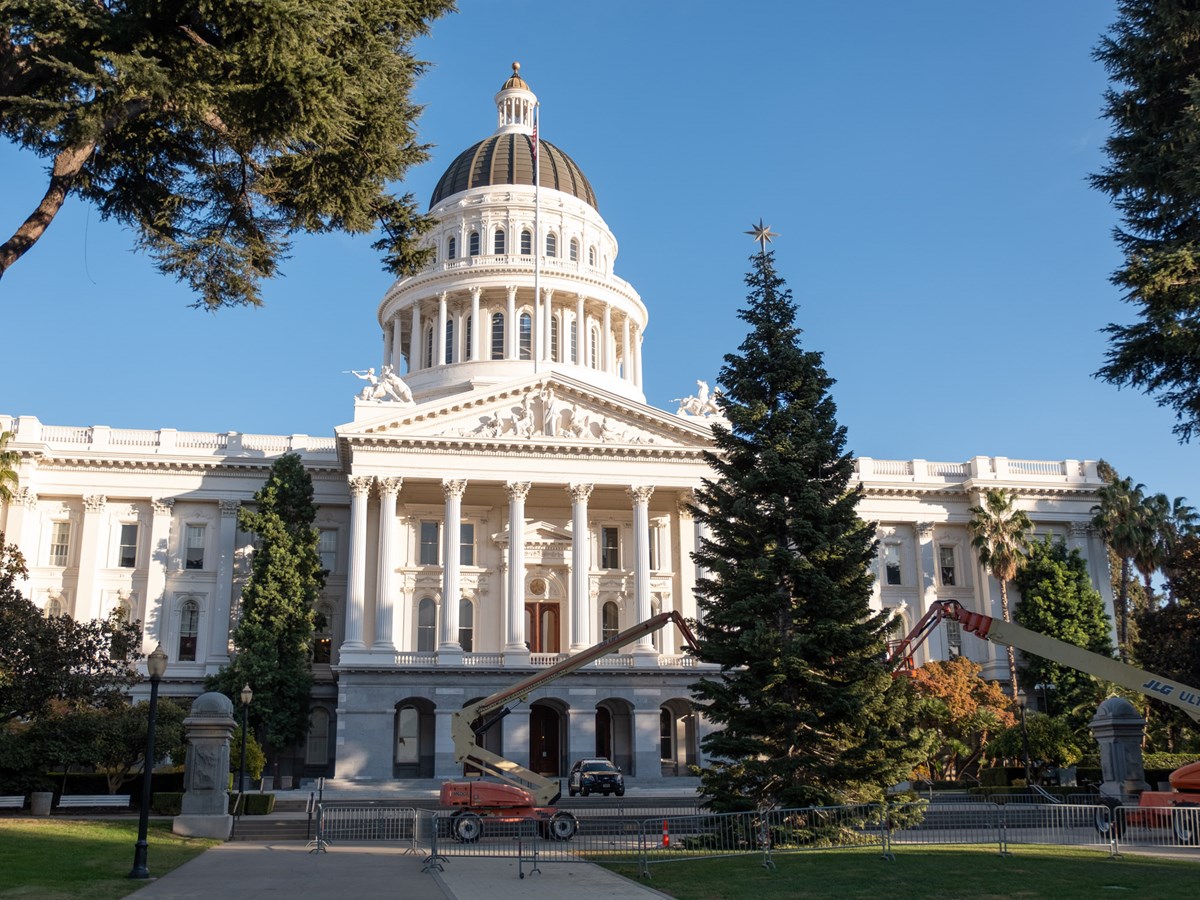
Andrew Nixon / CapRadio
‘It’s a lot of history that’s sort of being bulldozed’
Most agree that the 70-year-old Capitol annex needs major safety and accessibility upgrades.
But not everyone is thrilled with the idea of changing the west steps.
“This has become an iconic location for people to come and petition their government,” said Republican Assembly member Josh Hoover of Folsom, who ousted Cooley in November and campaigned against the annex project’s billion-dollar price tag.
“Over the years, we’ve had small business owners, union leaders, law enforcement, social justice advocates, civil rights leaders, environmentalists, Democrats and Republicans come to these steps and petition their government,” Hoover said earlier this year. “That goes away under the current version of the project.”
He is running a bill that, when amended, would require a new visitor’s center be built beneath the new annex offices, which he says would preserve the west steps and minimize the impacts of construction.
But as a freshman Republican in the Legislature, the bill has a slim chance of passing and it has not yet been scheduled for a hearing.
But there are other community members and advocates who share his skepticism about the facelift and project.
Samantha Corbin, a lobbyist who works mostly with nonprofits, remembers speaking at the first Sacramento Women’s March in 2017.
“Standing on the west steps and seeing tens of thousands of people all the way down Capitol Mall is kind of an unforgettable moment,” she said. “And just one of so many moments historically that have been there.”
Corbin has raised questions about the visitor’s center and other aspects of the project, which she called “kind of a big boondoggle.”
“It’s a lot of history that’s sort of being bulldozed for something shiny and new and is going to take a very, very long time,” she said. “Ultimately, will someone be able to hold an event in that location? Probably. Will it be the same? No, it won’t have the same historical implications.”
Corbin is also concerned about the impact construction will have on surrounding businesses. She says many business owners were lied to about the length and severity of impacts on traffic and parking.
“They were told it’s going to be a really quick, easy [renovation] and maybe take two or three years. It’s not going to interrupt your business,” she said. “That’s just not the case. That’s expected to be seven or more years of a lot of disruption.”
Next Steps for the West Steps
For the most part, Democratic lawmakers have been mum on the Capitol Annex Project, particularly after Cooley, who spearheaded it during his tenure, left the Legislature.
Freshman state Sen. Angelique Ashby, a Democrat who represents Sacramento, believes “there has to be a little bit more community input” on certain facets of the project, particularly the west steps.
“I have heard from a lot of people in Sacramento who have concerns about it,” she said during an event in March. “I think there will be further conversation around the project, but you’ll also continue to see the construction moving forward, particularly on the annex.”
The lawsuit at the center of the project’s delays allows the state to demolish the existing annex building at any time.
But any new construction is prohibited under the ruling until the state revises and recirculates portions of the project for public comment, including placement of a visitor’s center and the design of a new annex building.
But lawmakers and the Department of General Services have not said when that will happen, and opponents of the project say their calls for an “open, public process” are being ignored.
“The court decision said they had to recirculate and reapprove the [environmental impact report] related to the design of the new Annex and design and location of the Visitor Center,” said Richard Cowan, a former chairperson of the Historic State Capitol Commission and plaintiff in the suit. “Public hearings and participation should occur. However, our requests for open discussion are being denied.”
A joint statement from two Democratic lawmakers, Assembly member James Ramos of Highland and Sen. John Laird of Santa Cruz, who co-chair the Legislature’s Joint Rules Committee, said they “have been instructed not to comment on the Annex projects” on “the recommendation of counsel” due to litigation, though the lawsuit was decided in January.
“We can say that the California Highway Patrol issues permits for the grounds of the Capitol and that permitting for events on the West Steps is fluid and will continue until further notice,” the statement said.
California Highway Patrol is currently accepting permits for events on the west side until August, when construction is scheduled until June 2026.
Neither lawmaker’s office responded to follow-up questions about the project. Speaker Anthony Rendon and Senate pro Tem Toni Atkins have also declined to comment.
And until the revised environmental impact report is unveiled, most of the project will remain in limbo.
